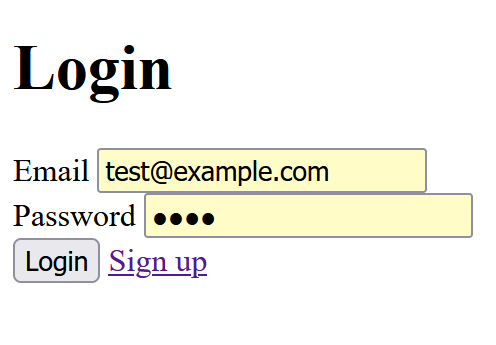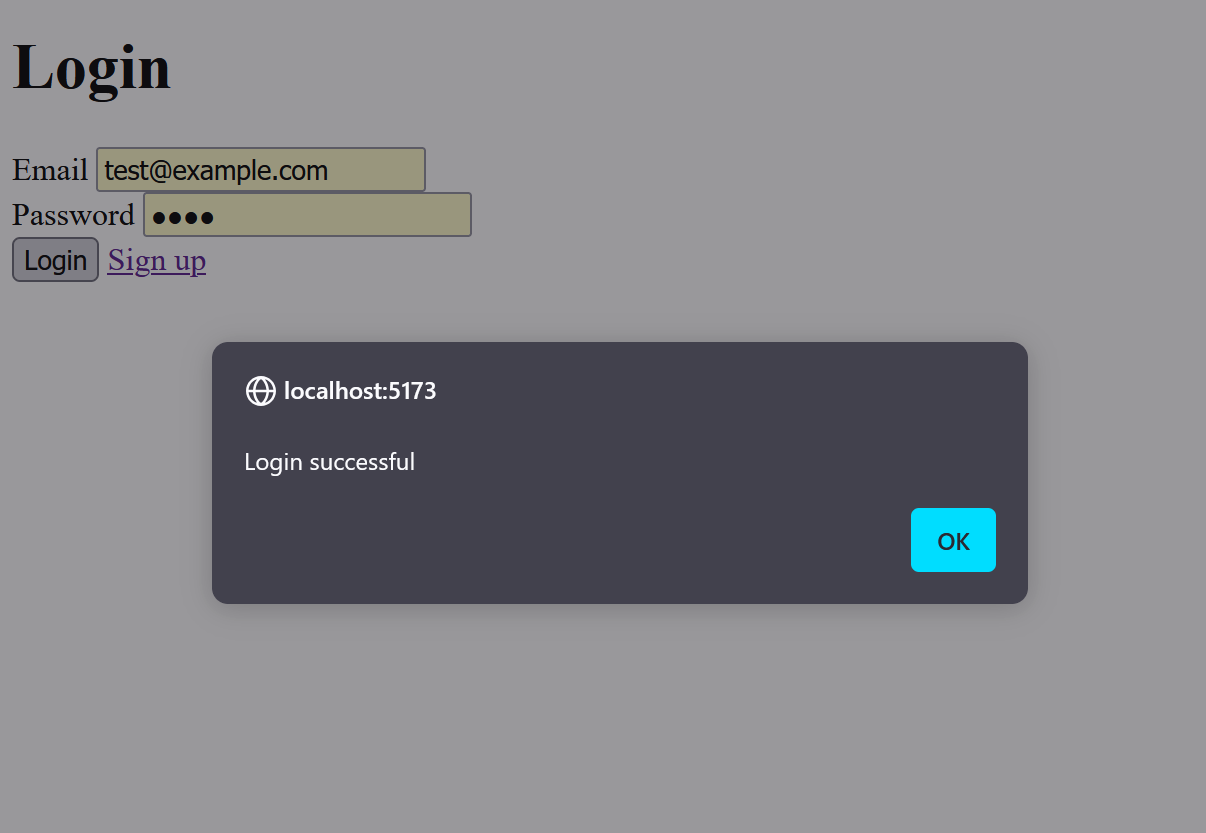Recently, I learned about Drizzle, a new ORM for TypeScript. It occurred to me that it would be interesting to try it out with SvelteKit to build a fullstack application entirely in TypeScript.
This article will just cover the basics of setting up a project with SvelteKit and Drizzle, but here is one of my project (WIP) built with this stack: review-planner.
As a simple example, this post will cover how to implement a user registration and login workflow with JWT authentication in a SvelteKit application. The source code (with some modifications) can be found here: svelte-jwt-example.
These are the steps:
- Setting up the project
- Initializing the database
- Setting up the development environment
- Implementing a simple user login workflow
Create the project
First, create a new SvelteKit project, and install dependencies (Official tutorial).
1
2
3
|
npx sv create svelte-jwt
cd svelte-jwt
npm install
|
These are the selected options:
1
2
3
4
5
6
7
8
9
10
11
12
13
14
15
16
17
18
19
20
21
22
23
24
25
|
◇ Which template would you like?
│ SvelteKit minimal
│
◇ Add type checking with Typescript?
│ Yes, using Typescript syntax
│
◆ Project created
│
◇ What would you like to add to your project? (use arrow keys / space bar)
│ sveltekit-adapter, drizzle
│
◇ sveltekit-adapter: Which SvelteKit adapter would you like to use?
│ node
│
◇ drizzle: Which database would you like to use?
│ PostgreSQL
│
◇ drizzle: Which PostgreSQL client would you like to use?
│ Postgres.JS
│
◇ drizzle: Do you want to run the database locally with docker-compose?
│ Yes
│
◇ Which package manager do you want to install dependencies with?
│ npm
|
Set up the development environment
Config file
There should be a .env.example file in the root directory, generated during project creation. Rename it to .env.
I like to use .env file directly for my development environment for simplicity, since I deploy my stuff on k8s, and the .env file content will be overwritten by environment variables defined in the deployment.
Feel free to use other profiles like .env.dev, etc.
Database
In the installation process, Drizzle automatically creates a docker compose file, which spins up a PostgreSQL database.
Additionally, there should be some npm commands defined in package.json for database operations.
1
2
3
4
5
6
|
"scripts": {
"db:start": "docker compose up",
"db:push": "drizzle-kit push",
"db:migrate": "drizzle-kit migrate",
"db:studio": "drizzle-kit studio"
},
|
So to start the database, run:
There is a browser-based user interface that comes with Drizzle, which can be launched like this:
It will be available at https://local.drizzle.studio/.
Development server
To start the development server, run:
Define the database schema
This section is about creating the database schema in SvelteKit, and pushing it to the database. Refer to the Drizzle documentation for more information.
First, define the schema in SvelteKit. To do that, find the file src/lib/schema.ts and add the following:
1
2
3
4
5
6
7
8
9
10
11
|
import { type InferSelectModel } from "drizzle-orm";
import { pgTable, serial, text } from "drizzle-orm/pg-core";
export const user = pgTable("user", {
id: serial("id").primaryKey(),
email: text("email").unique().notNull(),
name: text("name").notNull(),
password: text("password").notNull(),
});
export type UserRow = InferSelectModel<typeof user>;
|
Then, push the schema to the database:
This will create the user table in database.
Implement the user registration route
The registration route will consist of a simple frontend with an HTML form, and a backend endpoint to handle the form submission.
Everything will be under src/routes/register.
Frontend
1
2
3
4
5
6
7
8
9
10
11
12
13
14
15
16
17
18
19
20
21
22
23
24
25
26
27
28
29
30
31
32
33
34
35
36
37
38
39
40
41
42
43
44
45
46
47
48
49
50
51
52
53
54
55
56
57
58
59
60
61
62
63
64
65
|
<!-- src/routes/register/+page.svelte -->
<script lang="ts">
import { goto } from "$app/navigation";
async function handleSubmit(event: SubmitEvent) {
// prevent default behavior of form submission (page reload with query string params)
event.preventDefault();
const form = event.target;
if (form == null || !(form instanceof HTMLFormElement)) {
return;
}
const formData = new FormData(form);
// ensure passwords match
const pass = formData.get('password') as string;
const confPass = formData.get('confirmPassword') as string;
if (pass !== confPass) {
alert('Passwords do not match');
return;
}
// send a POST request to the current route
const resp = await fetch(window.location.pathname, {
method: 'POST',
headers: {
'Content-Type': 'application/json',
},
body: JSON.stringify({
email: formData.get('email'),
name: formData.get('name'),
password: formData.get('password'),
}),
});
if (!resp.ok) {
alert('Failed to sign up');
return;
}
goto('/auth/login');
}
</script>
<h1>Sign up</h1>
<form on:submit={handleSubmit}>
<label for="email">Email</label>
<input type="email" id="email" name="email" required />
<br />
<label for="name">Name</label>
<input type="text" id="name" name="name" required />
<br />
<label for="password">Password</label>
<input type="password" id="password" name="password" required />
<br />
<label for="confirmPassword">Confirm Password</label>
<input type="password" id="confirmPassword" name="confirmPassword" required />
<br />
<button type="submit">Sign up</button>
</form>
|

Backend
1
2
3
4
5
6
7
8
9
10
11
12
13
14
15
16
17
18
19
20
21
22
23
24
25
26
27
28
29
|
// src/routes/register/+server.ts
import { db } from "$lib/server/db";
import { user } from "$lib/server/db/schema";
import type { RequestEvent } from "./$types";
// request body type
type RegistReq = {
email: string;
name: string;
password: string;
}
// handling POST /api/regist
export async function POST({ request }: RequestEvent) {
const body = await request.json() as RegistReq;
// TODO validation
// insert user
await db.insert(user).values({
email: body.email,
password: body.password,
name: body.name
});
// respond with 201 Created
return new Response(null, { status: 201 });
}
|
Implement login route
This will be another HTML form and a backend endpoint in the same manner, contained in src/routes/auth/login.
Frontend
1
2
3
4
5
6
7
8
9
10
11
12
13
14
15
16
17
18
19
20
21
22
23
24
25
26
27
28
29
30
31
32
33
34
35
36
37
38
39
40
41
42
|
<!-- src/routes/auth/login/+page.svelte -->
<script lang="ts">
async function handleSubmit(event: SubmitEvent) {
event.preventDefault();
const form = event.target as HTMLFormElement;
const formData = new FormData(form);
const email = formData.get("email");
const password = formData.get("password");
const resp = await fetch("/auth/login", {
method: "POST",
headers: {
"Content-Type": "application/json",
},
body: JSON.stringify({ email, password }),
});
if (!resp.ok) {
alert("Failed to login");
return;
}
alert("Login successful");
}
</script>
<h1>Login</h1>
<form on:submit={handleSubmit}>
<label for="email">Email</label>
<input type="email" id="email" name="email" required />
<br />
<label for="password">Password</label>
<input type="password" id="password" name="password" required />
<br />
<button type="submit">Login</button>
<a href="/auth/regist">Sign up</a>
</form>
|

Backend
1
2
3
4
5
6
7
8
9
10
11
12
13
14
15
16
17
18
19
20
21
22
23
24
25
26
27
28
29
30
31
|
import { db } from "$lib/server/db";
import { user } from "$lib/server/db/schema";
import { eq } from 'drizzle-orm';
import type { RequestEvent } from "./$types";
type LoginReq = {
email: string;
password: string;
}
export async function POST({ request }: RequestEvent) {
const body = await request.json() as LoginReq;
const dbUsers = await db.select()
.from(user)
.where(eq(user.email, body.email))
.limit(1);
if (dbUsers.length === 0) {
return new Response(null, { status: 401 });
}
const dbUser = dbUsers[0];
if (dbUser.password !== body.password) {
return new Response(null, { status: 401 });
}
return new Response(JSON.stringify({
name: dbUser.name,
email: dbUser.email
}), { status: 200 });
}
|
Conclusion
Now the simple registration and login form should be working. Navigate to http://localhost:3000/auth/regist to test it out.
Once registered, you should be taken to the login screen, and be able to log in.




